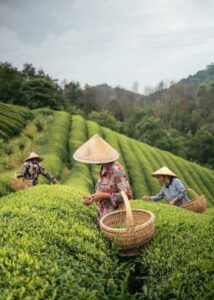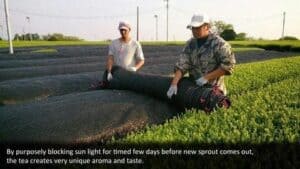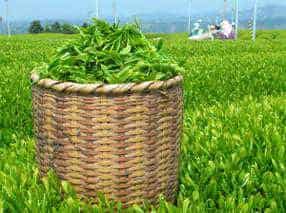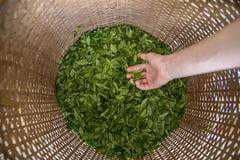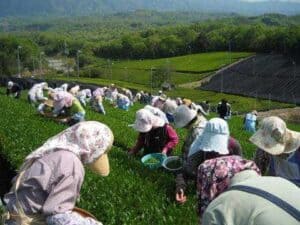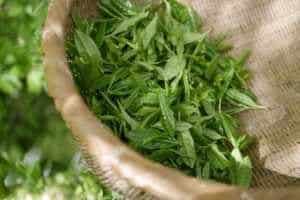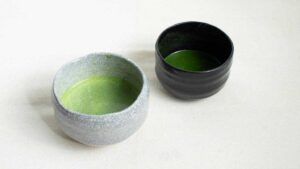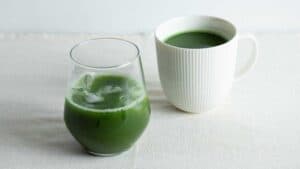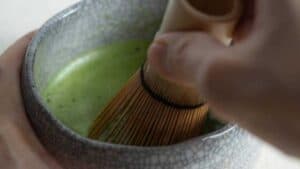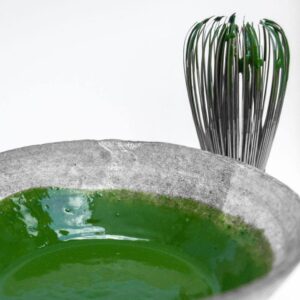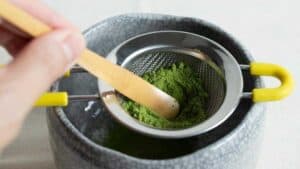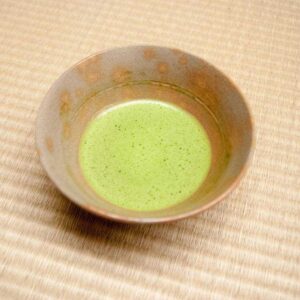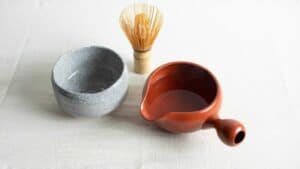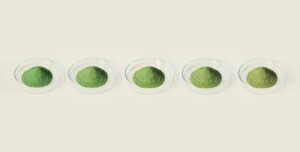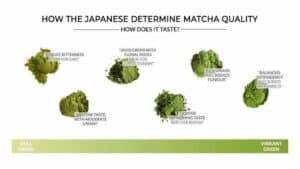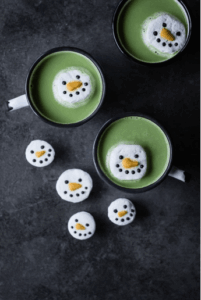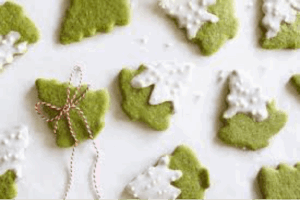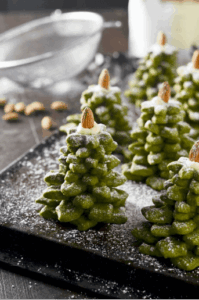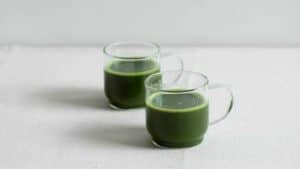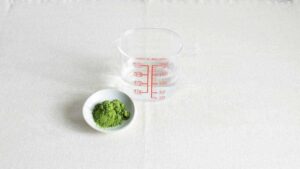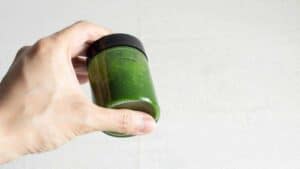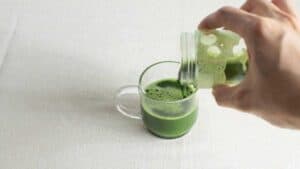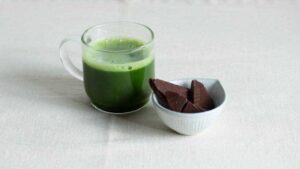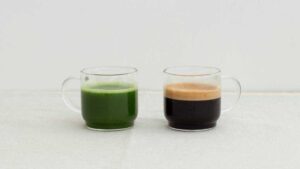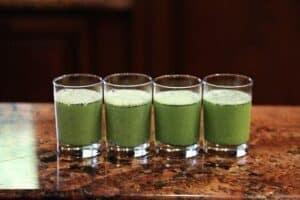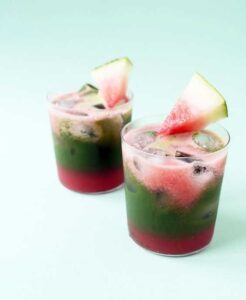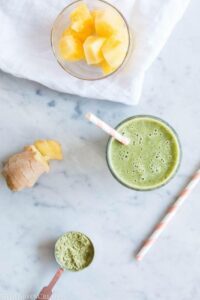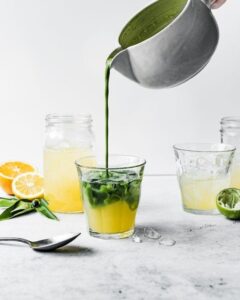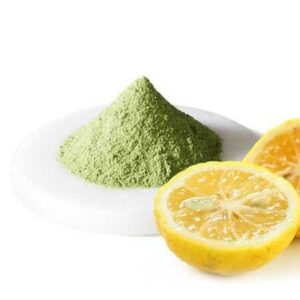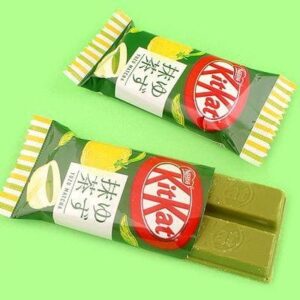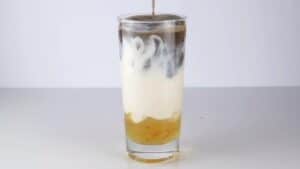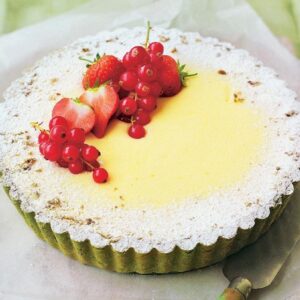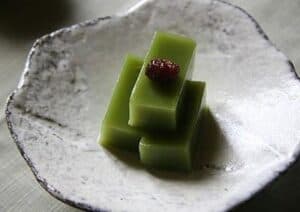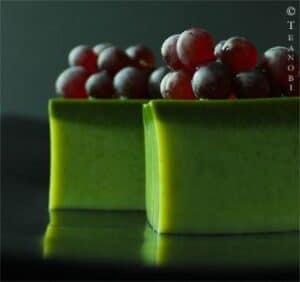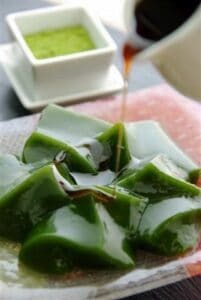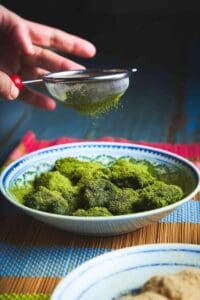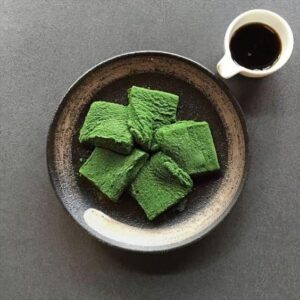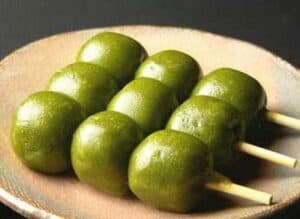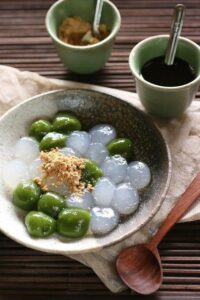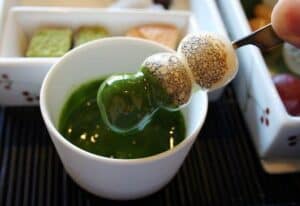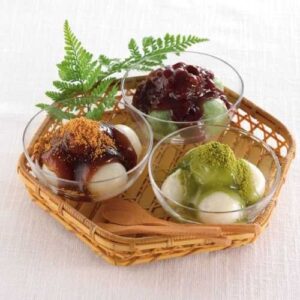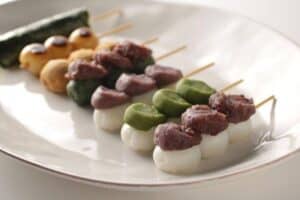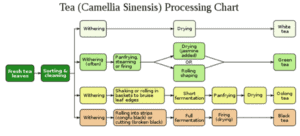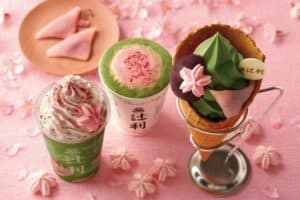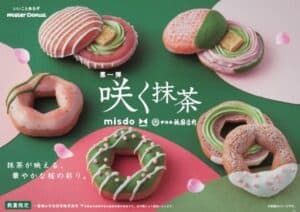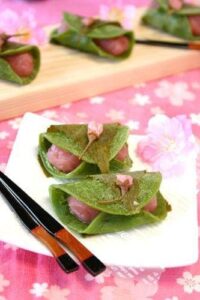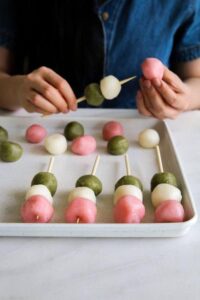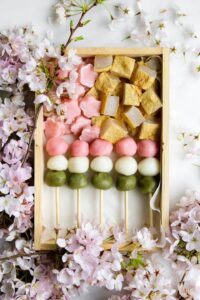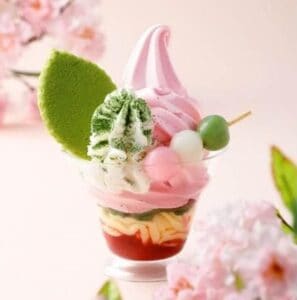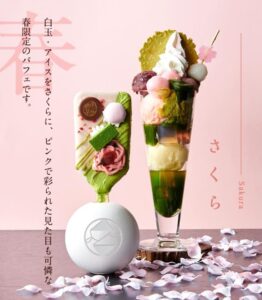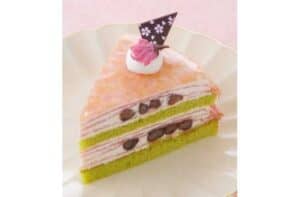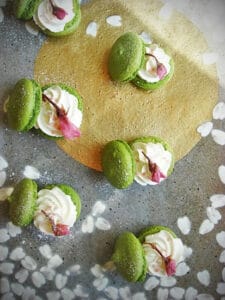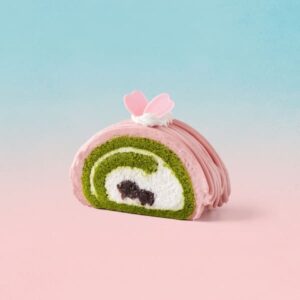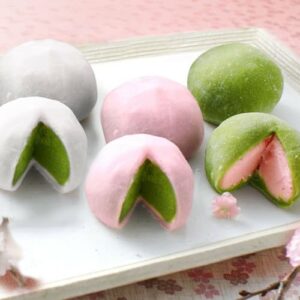Category: Blogs
10 things about growing green tea that you (probably) never knew
Green tea is at the heart of Japanese culture. From the harvesting to the preparation of the leaves, every step is meticulous, complex and deeply rooted. Green tea harvested in Japan has certain flavors and nutritional properties that are different from teas from China and other parts of the world. Here are 10 things about Japanese green tea that you (maybe) didn’t know.
- The first harvest of the year, the tea leaves are the most nutritious and sought after. The first harvest begins in May and lasts for several weeks until June. This harvest is known to produce the highest quality green tea leaves, largely due to the slow growth during the cold months, which makes the leaves denser in nutrients, resulting in a better flavor. The leaves picked in spring contain three times as much L-theanine as those produced in later harvests, giving this first batch of tea a sweet and mild flavor.
- The second harvest of the year in June and July is very hot because it is summer, making harvesting very difficult. During this time, the tea leaves grow faster and are of lower quality, with a more bitter taste, requiring more efficient management of both employees and harvest control.
- KANREISHA CURTAIN or black curtains that are popularly used to cover the ground can be used to protect tea plants from direct sunlight. About a month before each harvest, tea plants are covered with curtains to limit the amount of sunlight that does not directly hit the tea plants. There are two types of curtains used in Japan: the type that uses direct cloth to cover the plants and the type that uses awnings to block the sunlight. Each tea plantation has different uses. Some places use both types. Tea plants that are covered with such curtains before harvesting will help the tea to develop a sweet taste.
- Each tea leaf is carefully selected by the tea pickers. Compared with the tea leaves selected by machine, the quality of the tea leaves is not as high as those picked by hand. The taste of the tea leaves by hand is more mellow and the aroma is more delicate. The best time to pick the leaves is when there are three to five young plants and the leaves are of the right size. Picking too early means less yield. Picking too late affects the quality of the tea. Even one day can make a difference and make the leaves bitter. Therefore, it is very important to pick the tea leaves at the right time and pick them quickly and all at once. Therefore, each worker must use his experience to pluck the leaves quickly and meticulously.
- Japan actually produces less tea than other countries. Despite its strong green tea culture, Japan produces only 7% of the world’s green tea. Most of it is consumed domestically, and only a small portion is exported to other countries. The Japanese consume 95% of all tea production in the country, leaving only 5% exported to other countries.
- The most popular method of storing tea leaves is still the use of traditional wooden baskets. Despite the widespread use of machinery and technology, traditional wooden baskets are still used to store tea.
- In the fall, tea plantation workers start preparing the farm for the next year’s harvest. Green tea trees are pruned in the autumn months of October and November. Pruning at this stage ensures that the young leaves of the old leaves do not mix with each other and reduce the harvest in the spring of the following year. Failure to prune at the right time will harm the tea trees and may even result in weak tea trees. Therefore, in late summer and early autumn, the soil must be enriched and the pH of the soil adjusted to the appropriate level.
- There is a tea harvest tour. Obubu is the Kyoto word for a type of green tea, which is one of the most expensive teas in Japan, costing around 14,000 yen per kilogram. For over 800 years, the farm in rural Kyoto Prefecture has been open to visitors and the public during the harvest season. It begins with a morning tour of the farm and the opportunity to pick your own tea leaves. The staff will demonstrate how to pick the leaves, and visitors will be given a traditional wooden basket to collect the leaves. The leaves can then be sent for processing or roasted, ready to be served as a tea drink made from the leaves you have picked for a delicious cup of tea.
- Green tea plants require special care during the winter. Dry leaf straw and bamboo husks are placed beside the plants to provide warmth during the cold and snowy months, act as fertilizer and help maintain the soil at the right level of moisture. Since many plants are prone to disease and die during the winter, the tea plants must be well cared for to ensure they are ready for the next harvest.
- Harvesting in Japan is different from the techniques used in China, as the Japanese pick certain leaves at different times of the year, while in China they usually pick all the leaves at one time.
The process of harvesting tea leaves is a complex task that takes a whole year. From the first harvest to the last, farmers in Japan work tirelessly to produce the highest quality tea possible for the best tasting tea.
Source
Article from: Fuwafuwa
Difference between KOICHA and USUCHA
Have you ever wondered why some green tea shops have a strong taste while others have a very weak taste, even though they use the same matcha powder? That’s because there are actually two ways to brew green tea in Japanese culture, called Usucha and Koicha. These are traditional ways of preparing matcha that originate from the Chado ceremony, a Japanese tea ceremony.
If we translate it directly from Japanese, Usucha means “light tea”, while Koicha means “strong tea”. It may not be easy to understand, but the meaning is straightforward. Usucha matcha has a thick layer of foam on the surface, which can be easily achieved by beating the tea with a tea brush. The taste is smooth. When you first drink it, it is sweet and bitter, but when you swallow it, you will get the umami taste. It is brewed in a small cup for one person, so the tea has a mild and slightly bitter taste. In the old tea ceremony, this type of tea was eaten with Higashi Japanese sweets, but nowadays it is eaten with namagashi, such as mochi, dango, nerikiri, and yokan.
On the other hand, Koicha matcha is much more concentrated and has an umami flavor that may be too strong for beginners to drink. This is because Koicha requires about twice the amount of matcha powder and half the amount of water compared to Usucha. Because in the tea ceremony, Koicha is brewed in a large container, so it can be drunk by many people, it needs to be brewed to have a stronger flavor.
It can be seen that in the two traditional styles of matcha brewing, the highest quality matcha is preferred for the ceremony, that is, using tea powder where the tea leaves are covered with leaves, to be exposed to the least amount of sunlight for the first 20 days or so. This period is calculated from the time when the first buds start to sprout. This covering to block the sunlight prevents the sweetness in the leaves and limits the bitterness that can be produced. The tea leaves are harvested by skilled hand pickers to maintain the quality of the tea leaves until the final stage. Because after picking the tea leaves, they must be steamed to prevent oxidation of the tea leaves and maintain their green color and freshness.
Then, it is dried and sorted to prepare for grinding with a large granite mortar into a fine tea powder called matcha [抹茶]. Whether the mortar is turned manually or automatically, the amount of tea powder that can be collected per hour is only forty grams. The best quality tea leaves are made from the top young leaves, so the production is labor-intensive, which inevitably makes the price relatively high.
Green tea is a beverage that has been with the Japanese for a long time. It is used in many important events, such as welcoming important guests, birthdays, or changing seasons, to truly experience the taste of drinking tea. However, making your own usucha and koicha does not make the activity a complete matcha tea ceremony in the Japanese style. This is because the actual ceremony has many other steps that are quite complicated.
Therefore, some cafes nowadays use the names of these two types of tea brewing as the names of their menus to help customers understand the taste and strength of the tea. There is no traditional Japanese tea ceremony when serving it.
However, even though Usucha tea is a light tea with a not very strong flavor, it may still be too strong for those who have never tried matcha. If you are not a regular tea drinker, it is recommended that you start with Matcha Latte first, or if you are using pure matcha, you should brew it weaker than the original Usucha.
How to prepare Usucha and Koicha
To make Usucha, mix 1 teaspoon of matcha powder with 60 ml of hot water and quickly whip the matcha in an M shape until dissolved. Repeat until the matcha has a thick foam with many small bubbles. Finish by whipping in a circle and lifting the matcha from the center of the bowl.
For concentrated Koicha, use 2 spoons of matcha powder with 30 ml of hot water and slowly stir in a circle until dissolved. Avoid creating bubbles to obtain a concentrated matcha with a consistent taste. The water used to brew both types of tea should be 85 degrees hot water, which is enough. This is another precaution to maintain the best taste of tea because each type of tea is suitable for different water. (Read more at https://bit.ly/3tWmvZj ) In addition to the temperature precautions, the water used to brew matcha does not need to be mineral water. Just use water with a neutral pH value. (Read more at https://bit.ly/3dRldcB )
Source
https://naokimatcha.com/recipes/usucha-and-koicha-2/
Article from : Fuwafuwa
Understanding the difference between Ceremonial grade and Cooking grade matcha powder
Have you ever noticed that the green tea we buy in the market or from cafes has different shades of green, even though it’s all green tea? That’s because there are many grades of matcha powder, and each grade has different characteristics, flavors, smells, and colors, which come from tea leaves that go through different harvesting processes. Each grade of matcha powder is suitable for different uses, namely:
Matcha powder can be broadly divided into two grades: 1. Ceremonial grade (ceremonial matcha) and 2. Cooking grade or Culinary Grade (Matcha for cooking) The division of matcha powder into 2 grades is similar to the division of wine into fine wines for drinking neat and wines for cooking.
Ceremonial grade ( Matcha Ceremonial) With a soft taste, naturally sweet and no bitter taste of bright green matcha powder, giving a clearer color than Cooking Grade, ceremonial matcha is a high-grade tea, comparable to fine wine. With a delicate taste Even using a small amount to brew, it can produce a good taste. This grade of matcha powder has a smooth texture like flour and gives a very good texture. Therefore, it is suitable for brewing hot or seasoning in the simplest way. To get a soft texture with a light sweetness Japanese people like to use this grade of tea in tea ceremonies. According to traditional Japanese culture, it is not popular for making desserts or food. Because if you brew it as matcha latte or make desserts, the soft and sweet taste may be overshadowed by other ingredients. And importantly, this ceremonial grade tea is quite expensive. If used to make desserts or lattes, it may increase the cost.
C ooking grade or Culinary Grade ( matcha for cooking) is a tea grade used for making desserts, food, smoothies, ice cream and hot and cold drinks. When cooked with other ingredients, it will make the flavor of the green tea in that menu stand out even more. The color of the tea powder of this grade is not bright green like ceremonial matcha because it comes from tea leaves that were harvested later. This type of matcha powder is further broken down according to the smell, color and flavor of the tea powder to suit different menus. If anyone likes the intensity and bitter taste of this grade of tea, they can choose to brew pure green tea to drink, but it is not as popular as Ceremonial Grade.
However, the two types of tea have different characteristics, so to make it easier to understand, they are as follows:
- Harvesting Ceremonial Matcha comes from the first young leaves of the tea, which are the best leaves, around the end of April or the beginning of May only. This is the first harvest, which usually yields the best leaves because the tea tree still retains nutrients stored during the winter. The top leaves that are picked will have a sweeter taste than the lower leaves. However, Cooking Matcha comes from the second harvest, which has a more bitter taste, is not as bright in color as ceremonial grade teas, and the leaves are harder.
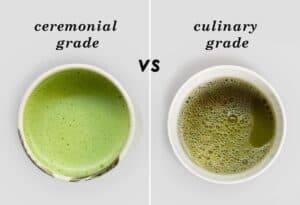
- The color of the tea powder is bright green and indicates the freshness and quality of the tea. Ceremonial grade matcha with high tea quality is brighter green than cooking matcha because it is the first harvested tea leaves that contain the highest levels of chlorophyll and L-theanine. Matcha powder that is yellowish green or not bright green indicates that it comes from older tea leaves, which are harvested from the bottom of the tea plant. However, some Japanese tea varieties that are grown with a lot of volcanic soil around them also affect the color of the tea. For example, Kagoshima matcha is known for having a slightly dark green color, while Seimei is a very bright green color.
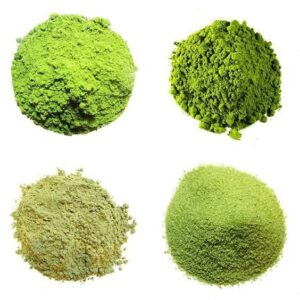 In addition to the above differences, if the tea leaves come from an organic tea plantation, the taste will be different from that of a normal tea plantation that may have used chemicals in planting. Precautions for choosing matcha for cooking that are available in the market today: if you choose a very cheap grade, it may taste too astringent and you may not even taste the matcha at all.
In addition to the above differences, if the tea leaves come from an organic tea plantation, the taste will be different from that of a normal tea plantation that may have used chemicals in planting. Precautions for choosing matcha for cooking that are available in the market today: if you choose a very cheap grade, it may taste too astringent and you may not even taste the matcha at all.
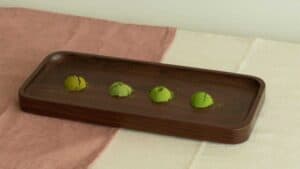
However, the two grades of matcha are designed for different uses and cannot be clearly compared. Matcha powder for cooking can also be divided into several sub-categories according to its usage. The choice of the two grades of matcha powder depends on your preferences and the results you want to achieve. Whether you want to eat it as ice cream, nama chocolate, pudding, cheesecake that has a clear tea flavor and green tea color, the highest grade of tea for cooking is suitable for use. The lower grades are used to make desserts that require a strong, bitter flavor, such as brownies, cakes, or soba noodles. Or if you only use the color and do not emphasize the clear flavor, you can use a lower grade of green tea to make bread and sprinkle it on the dessert. But if you want to brew it with plain water to get the umami flavor of the tea, it is recommended to use ceremonial grade tea. In addition to dividing tea grades by harvest, it can also be divided into 2 types according to the tea brewing method, called KOICHA and USUSHA brewing. See more at https://bit.ly/2RrD29N
Source
https://www.matchaeologist.com/blogs/explore/ceremonial-vs-culinary-matcha
https://naokimatcha.com/articles/ceremonial-gradematcha/
http://fullleafteacompany.com/products/matcha
Article from : Fuwafuwa
Behind the Leaves: A Detailed Look at Tea Production
Iced Matcha Latte Iced Matcha Latte
Turn your cold green tea into a premium matcha latte, a popular menu item of the shop that is so delicious you have to tell others!!
Good quality matcha powder will give a beautiful green color. When poured over fresh milk, you will see a layer of emerald green gradually seeping down. The method of making it is not difficult. Especially if you have the equipment to help, it will not take long to brew. Let’s see the ingredients and brewing method. ^^
Dissolving aid
- Matcha powder sieve
- Chasen (茶筅) is a bamboo stick used to grind green tea powder to prevent it from clumping.
- Portable milk frother (Mini milk mixture)
- Shaker cylinder
Ingredients for a 16 Oz. glass.
- MATCHAZUKI Excellent Grade Matcha Powder 3 grams (~1.5 teaspoons)
- Warm water 40 ml
- Fresh milk 150 ml
- 10 ml syrup (~2 teaspoons)
- ice
Brewing process
1. Dissolve matcha powder in warm water by sifting matcha powder through a sieve into a cup or bowl, then pour in warm water and use a Chasen or milk frother to beat the tea powder into the water. Then set aside.
2. Add ice to another glass.
3. Add syrup according to desired sweetness.
4. Pour in fresh milk and mix with syrup.
5. Pour the dissolved matcha over the fresh milk.
Or you can watch a video on how to make it here ^^
*** If you don’t have a dissolving device, try this method.
———————————-
Add some color to your tea menu for Christmas.
As the end of the year approaches, many restaurants are starting to release new menus to welcome the festive season, including drinks and bakery items. But if you’re still unsure of how to create your own menu, Matchazui has compiled ideas and recipes for green tea drinks and desserts, so that green tea lovers can try to change up their menus and make them more fun.
Let’s start with hot matcha latte, a recommended menu of many shops that adds color to the Christmas festival. It’s easy to eat by adding cute snowman marshmallows. The method is not difficult because we start by making square marshmallows according to the marshmallow recipe of the favorite shop. Make them large enough to cut into small rounds. Use a toothpick with one pointed end to break off and dip the toothpick into melted orange white chocolate and draw a nose on the marshmallow. For the eyes, put 2 tablespoons of dark chocolate chips and 1/4 teaspoon of coconut oil in a small plate and microwave in 20-second increments, stirring a little at a time, until the dark chocolate is completely melted and smooth. Use a pointed toothpick to dip into the melted dark chocolate and smear it on the snowman’s eyes and mouth. Let the snowman chocolate set at room temperature before serving with your favorite hot matcha latte.
Next up is the Matcha Cookie Christmas Tree. Start by beating 1 cup unsalted butter, 2 tablespoons matcha powder, and 1 ½ cups sugar until fluffy. Add 1 egg yolk and 1 teaspoon vanilla and mix until combined. Sift together the flour, baking soda, and salt and set aside in another bowl. Place all ingredients in a bowl and mix until combined. Cover the dough and refrigerate for 30 minutes. Preheat oven to 180 degrees. Line a baking tray with baking paper.
Cut dough in half or quarters and roll out to about 1/6 – 1/4 inch thick. Cut out Christmas tree molds and place on prepared baking sheet. Bake each batch for 7 – 9 minutes. Decorate with white chocolate, microwaved for 20 seconds, or mix in a little red chocolate for a different design.
The intensity of the Christmas tree color depends on the amount of matcha powder added. Add some cuteness by tying it with a bow or packing it in a clear plastic bag to show off the cookie pattern.
A technique to make Christmas cookies more cute is when pressing the dough into the shape of a Christmas tree. You can press it into the shape of stars of various sizes so that after baking, you can arrange them in alternating layers, with each layer connected with a little white chocolate. Stick the star on top with almonds and sprinkle a little icing. You’ve got a green tea cookie menu for this Christmas season.
Another menu that just seeing it makes you think of a Christmas tree is Matcha Mont Blanc. You can use the regular Mont Blanc recipe, but just replace the chestnut cream on top with green tea cream and decorate with colorful icing cookies. It becomes a green tea Mont Blanc that will impress anyone who eats it.
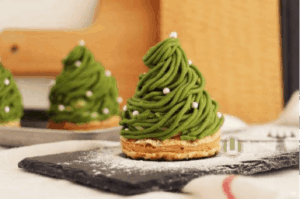
In addition to the tea menu above, which is a sample to give your tea shop some initial ideas for customizing their menu, there are many other green tea menus that can be sold during Christmas, such as Matcha Hot Chocolate or Matcha Macaron, or even Matcha Cake, which emphasizes red color with strawberries.
But if you’re not good at making desserts that require a lot of techniques, try adapting the no-bake green tea dessert menu (see more at shorturl.at/dpDS7) into a Christmas style. It’s another interesting idea. Especially if there are new menus and year-end campaigns with interesting promotions or activities, it will encourage customers to visit the shop even more (see more at shorturl.at/ceqKP). Because it’s not necessary for every shop to launch new menus during this festival. It might be difficult for some shops to always come up with new menus. Because according to Japanese belief, simply buying green tea to give to each other during various festivals is considered a blessing for good health (see more at shorturl.at/bcCHK).
Source
https://encha.com/pages/matcha-recipes
https://www.stephaniesuen.com/2018/12/08/mini-matcha-christmas-tree-sugar-cookies/
https://steemit.com/food/@alwayssmile/elegant-noble-french-dessert-mont-blanc
https://hostthetoast.com/matcha-cookie-christmas-tree-stacks/
Mastering the Art of Adding a Matcha Shot to Your Beverage
เวลาสั่งกาแฟ จะเห็นว่าในเมนูบางร้าน นอกจากเมนูกาแฟปกติ ก็จะมี option เพิ่ม Espresso shot อยู่ในนั้นด้วยเพื่อเอาใจคนชอบดื่มแบบเข้มๆ แต่ถ้าเป็นเมนูชา ไม่ว่าจะเป็นชาเขียว ชาโฮจิฉะ หรือชาไทย เราแทบจะไม่เห็นการเพิ่มช็อตชา เพื่อให้ชามีความเข้มข้นมากขึ้น ซึ่งจริงๆแล้ว ในต่างประเทศมี Option เพิ่มช็อตชา หรือแม้กระทั่งการขาย Matcha shot เหมือนการขาย Espresso shot ก็มีเช่นกัน ซึ่งมีประโยชน์ต่อสุขภาพพสมควรเลยทีเดียว แต่คนไทยจะไม่ค่อยคุ้นชินกับการดื่มชาเป็นช็อตแบบนี้
หากใครเป็นคนที่รักการดื่มชาเขียว จะพอทราบว่าการชงชาเขียวตามแบบฉบับคนญี่ปุ่น จะมีการชงแบบ Usucha และ Koicha ( ดูรายละเอียดเพิ่มเติมได้ที่ https://bit.ly/2RrD29N ) ซึ่งการทำ Matcha Shot ก็เป็นการดื่มที่เกิดขึ้นจากการที่ผู้คนพยายามหาวิธีการใหม่ๆ เพื่อให้ได้ลิ้มรสของชาเขียวเข้มข้น
ซึ่งความน่าสนใจของ Matcha shot คือ อัตราส่วนของน้ำต่อมัทฉะที่ใช้ในการชงนั้นใกล้เคียงกับ Usucha เพราะ Matcha shot ประกอบไปด้วยผงมัทฉะ กับน้ำร้อนเท่านั้น
ผงมัทฉะชนิดใดที่คุณควรใช้ในการทำ Matcha Shot ?
แนะนำเป็นเกรดพิธีการ ( Ceremonial Grade ) เพราะ Matcha shot มีจุดเด่น คือ รสชาติและสีของชา ซึ่งจะมาจากคุณภาพของผงมัทฉะล้วนๆ เพื่อให้ได้ Matcha shot ที่สีเขียวสดใส และ รสขมที่ชัดจากผงมัทฉะเพียวๆ การเสิร์ฟ Matcha shot ตามมาตรฐานคือ
ผงมัทฉะ 1 ช้อนชาหรือ 2 กรัม กับน้ำ 70 – 100 ม.ล. โดยน้ำมีอุณภูมิอยู่ที่ 80 องศาเซลเซียส หากเป็นน้ำที่เพิ่งต้มเดือดๆเลย แนะนำเป็นให้วางทิ้งไว้สัก 5 นาทีเพื่อให้อุณหภูมิน้ำลดลง
หลังจากเทน้ำผสมกับผงมัทฉะแล้วให้ปิดฝาขวดแล้วเขย่าประมาณ 30 วินาที หรือจนกว่าผงมัทฉะจะละลาย เสิร์ฟเป็น Matcha shot ได้เลย แต่ถ้าใครที่ถนัดกับการใช้ฉะเซ็นตี ก็สามารถทำได้เช่นกัน
อย่างไรก็ตาม Matcha shot อาจจะไม่เหมาะสำหรับทุกคน โดยเฉพาะผู้ที่เพิ่งเริ่มหัดดื่มชาเขียว เพราะ Matcha shot จะมีความเข้มข้นกว่ามากในช่วงแรกที่ดื่ม ( คล้ายกับดาร์กช็อกโกแลต 70% ) หลังจากนั้นไม่กี่วินาทีความเข้มข้นนั้น จะเปลี่ยนเป็นรสอูมามิที่ค้างอยู่ในคอ และมีรสชาติชาขมๆค้างอยู่ในปาก หากเพิ่งเริ่มดื่มมัทฉะแนะนำให้ดื่มเป็นมัทฉะลาเต้ หรือเป็นมัทฉะเพียวแบบเย็นจะดื่มง่ายกว่า
หากถามว่าการดื่ม Matcha shot กับ Espresso shot แบบไหนได้คาเฟอีนที่มากกว่ากัน สังเกตได้จากปริมาณคาเฟอีนในมัทฉะขึ้นอยู่กับปริมาณผงมัทฉะที่คุณใช้ ผงมัทฉะ 1 ช้อนชาจะมีคาเฟอีนประมาณ 70 มก. ดังนั้น Matcha shot จะมีคาเฟอีนประมาณ 70 มก. หากเปรียบเทียบกับ Espresso shot ในปริมาณที่เท่ากัน Espresso shot จะมีคาเฟอีนอยู่ที่ประมาณ 80 มก.
ความแตกต่างที่สำคัญระหว่าง Espresso shot และ Matcha shot คือ คาเฟอีนใน Matcha shot จะถูกปล่อยออกมาอย่างช้าๆเนื่องจากมีแอล – ธีอะนีน นั่นหมายความว่า แม้ว่าเครื่องดื่ม 2 ชนิดจะมีคาเฟอีน แต่ Espresso จะมีคาเฟอีนอยู่ในร่างกายเพียง 1 ชั่วโมงเท่านั้น ดังนั้นหากใครที่อยากให้คาเฟอีนอยู่ในร่างกายได้นานขึ้น เพื่อให้มีสมาธิ และช่วยให้สงบนิ่งมากขึ้น แนะนำเป็นให้ดื่ม Matcha shot แทนจะดีกว่า
Matcha shot เป็นเครื่องดื่มชาเขียวที่มีคุณค่าทางโภชนาการค่อนข้างสูง จึงแนะนำให้ดื่มทันทีที่ชงเสร็จ เพื่อความสดใหม่ และเพื่อเพิ่มพลังงานได้ในทันทีหลังจากดื่ม จึงเหมาะกับการดื่มในเช้าวันใหม่ หรือเมื่อรู้สึกเหนื่อยล้าจากการทำงานหนักมาตลอดทั้งวัน หรือจากการนอนไม่เพียงพอ การดื่ม Matcha shot จะช่วยให้รู้สึกกระปรี้กระเปร่าขึ้น เพราะการทำ Matcha shot ถูกดัดแปลงวิธีการชงให้ชงง่ายรวดเร็ว และเพื่อให้ดื่มได้ง่ายๆเพื่อรีบูสความสดชื่นในร่างกาย ทำให้บางคนที่อยากได้คุณค่าทางสารอาหารเต็มๆ
มาเริ่มต้นเช้าวันใหม่ ด้วย Matcha shot อุ่นๆสักแก้ว ดีมั้ยคะ 🙂
ที่มา
https://naokimatcha.com/recipes/matcha-shot/
http://hungarianhousewife.com/afternoon-boost-matcha-shot
บทความจาก : Fuwafuwa
Add some freshness to your life with Matcha Fruity
During this time, there are many seasonal fruits. Many shops that sell sweets and food will have fun creating new menus to match the festival. But for green tea shops, I believe that there must be many shops that feel that it is difficult to mix these delicious fruits with tea menus at the shop. Today, Matchazuki is sharing the idea of matcha fruity… paired with green tea and fruits such as mango, watermelon, pineapple, to create new menus at the shop, creating freshness, brightness, and as an idea for many people who are looking for drinks to refresh themselves during the day to try doing it.
Start with Mango Green Tea with Bubbles , which gets its sweetness from brown sugar coating the bubbles and from ripe mangoes instead of syrup. The bubbles can be bought ready-made or you can boil them yourself. We will put the bubbles at the bottom of the glass, followed by ½ cup of mango puree, fill the glass with ice and pour ½ cup of milk as the third layer. After that, brew the matcha in another teacup with 1 teaspoon of matcha powder and ¼ cup of water. Beat it with cha sen until it is blended, then pour the whipped green tea into the glass that was prepared earlier. It is done.
For those who do not want to buy ready-made mango puree, you can buy ripe mangoes and cut them into small cubes instead. Or you can use frozen ripe mangoes and roughly blend them with a little water, depending on the consistency you want. The size of the mangoes you cut will give you a better texture.
The next menu is so strange that it may not be able to imagine the taste for many people, but I recommend you try it. It is a watermelon green tea. It is a recipe without milk. It tastes like drinking pure green tea, but with a hint of watermelon to reduce the bitterness of the green tea and add sweetness from watermelon instead.
Start by blending 2 cups of watermelon and pour it into the bottom glass about ⅓ full. Fill the glass with ice. Then pour the green tea, made with 1 teaspoon of matcha powder, whipped with ¼ cup of hot water, over the watermelon. Pour the remaining blended watermelon juice over the glass. Garnish with watermelon slices for decoration.
The next recommended menu is Pineapple Green Tea , which is also sold at the famous coffee shop Starbucks. It is also a non-diary menu that is very refreshing.
How to make it is very easy, just take 1 teaspoon of matcha powder + 5 ounces of pineapple juice + ⅛ teaspoon of ginger + ¼ cup of coconut milk + 1 teaspoon of sugar + 6 ounces of cold water. After blending, pour it into a glass with prepared ice and it’s done.
A sour and refreshing menu that helps refresh the fatigue from staring at the computer all day is honey lemon green tea. Use ½ teaspoon of matcha powder, beat with 2 tablespoons of hot water, then add 3 tablespoons of honey and stir until dissolved. After that, pour into a glass with ice, followed by ½ cup of soda and 2 teaspoons of lime or lemon juice. Garnish with lemon or mint leaves and you’re done. But when drinking, it is recommended to stir it well before drinking for a harmonious taste.
And the last fruit is Yuzu, which is quite expensive in Thailand, but in Japan it is popularly used in snacks and drinks. Kit Kat also does not miss out on using Yuzu, an orange with a unique refreshing scent and a sour taste like lemon, in snacks to add interest and novelty to the product.
However, finding whole yuzu can be quite difficult and expensive. Currently, there are many companies in Thailand that sell pure yuzu juice for making desserts or drinks. You can buy it at bakery supply stores or directly from the company’s page.
Let’s take a look at the tea and yuzu menu… The yuzu green tea menu is a menu that many shops already have as part of their menu. The method of making it is similar to the green tea lemon soda. But another idea that is worth trying and is quite new is the yuzu hojicha latte.
In this recipe, we will add 2 tablespoons of yuzu marmalade to the bottom layer, followed by ½ cup of ice, then slowly pour in 200 ml of milk. Then, beat in 2 teaspoons of hojicha powder with 100 ml of hot water. Let it melt together and pour it on top to create 3 beautiful layers as shown in the picture.
However, yuzu can be used to make other types of sweets with matcha powder, making many other delicious desserts, such as yuzu green tea cheesecake, yuzu green tea tart, or green tea mousse served with yuzu macarons.
Staying home for a long time, try opening the stove, going into the kitchen, grabbing this and that, and you’ll get a bunch of new, delicious menus. Because green tea tastes good with anything. See recipes for desserts and other green tea drinks at https://bit.ly/2QYsheW
Source
https://www.davidstea.com/us_en/tea/yuzu-matcha/10812US01VAR0059386.html
https://kumikomatcha.fr/blogs/recettes/entremet-yuzu-matcha
https://hojicha.co/blogs/recipes/yuzu-hojicha-latte
https://www.hola.com/cocina/recetas/2014081873169/tarta-yuzu-te-matcha/
Article from: Fuwafuwa
Enhancing Japanese Desserts: Matcha Powder with Three Classic Toppings
“โยคัง วาราบิโมจิ ดังโงะโมจิ” ขนมญี่ปุ่น 3 ชนิดนี้ เห็นได้ทั่วไปในร้านขนมญี่ปุ่น บางร้านก็เสิร์ฟแบบเดี่ยวๆ บางร้านก็เสิร์ฟคู่ชาเขียวร้อนๆ ตามร้านคาเฟ่ จะถูกนำมาเป็นท้อปปิ้งบนพาร์เฟต์ ไอศครีม หรือน้ำแข็งใส เพื่อให้ขนมจานนั้นได้กลิ่นอายและสัมผัสรสชาติความเป็นญี่ปุ่น
ในปัจจุบันได้มีการดัดแปลงปรับสูตรให้รสชาติของขนมทั้ง 3 ชนิดนี้มีความหลากหลายมากยิ่งขึ้น และมีวิธีจัดเสิร์ฟแบบทันสมัยแต่ได้กลิ่นอายความเป็นวากาชิ หรือขนมญี่ปุ่น หลากหลายไอเดียและวิธีทำขนมแบบง่ายๆให้คนรักมัทฉะเอาไปปรับสูตรทำเองที่ร้านได้
เริ่มจาก “โยคัง”(羊羹) โยคังเป็นวุ้นถั่วแดงกวน ปกติจะมีรูปทรงเป็นแท่งสี่เหลี่ยมผืนผ้า สีน้ำตาลแดงจากถั่วรสชาติหวานจัด ส่วนใหญ่จะทานคู่กับชาเขียวร้อนในพิธีชงชารสชาติจะตัดกัน เดิมทีมีต้นกำเนิดมาจากประเทศจีน เป็นขนมที่ทำด้วยเจลาตินจากเนื้อแกะ ในยุคคามาคุระมีนักบวชศาสนาพุทธนิกายเซน เป็นผู้นำขนมโยคังเข้ามาเผยแพร่ในญี่ปุ่น แต่เนื่องจากศาสนาพุทธห้ามการฆ่าสัตว์ จึงมีการเปลี่ยนจากเจลาตินจากสัตว์ มาเป็นแป้ง ถั่วแดง และวุ้น และมีการใช้วุ้นเข้ามาผสมในภายหลัง จนกลายมาเป็นโยคังในปัจจุบัน
โยคังเป็นวุ้นญี่ปุ่นซึ่งมีต้นกำเนิดมาจากประเทศจีน มีลักษณะเป็นก้อนสี่เหลี่ยมสีน้ำตาลแดงโดยทำจากถั่วแดงกวน (Anko) ถ้าเป็นโยคังสีเขียวก็ทำจากชาเขียว ที่มีวิธีทำแสนง่าย
- นำถั่วแดงบดเนื้อเนียน 225 กรัมและน้ำตาลทรายขาว 70 กรัมผสมลงในหม้อ นำไปต้มด้วยไฟกลาง คอยคนตลอดด้วยไม้พายเพื่อไม่ให้ไหม้
- ต้มไปซักพัก แล้วลองลากไม้พายลงไปตรงกลางแล้วยังเหลือเป็นรอยลาก คือถั่วแดงไม่ไหลกลับมากลบรอยก็ถือว่าโอเค จากนั้นตักออกมาแผ่บนถาดเพื่อให้เย็นลง
- ในหม้อต้มอีกใบผสมน้ำ 180 มล. + ผงชาเขียว 5 กรัม กับผงวุ้นหรือผงคันเทน 2 กรัม ต้มจนเดือดแล้วจึงลดเป็นไฟเบา ต้มต่ออีก 2 นาทีแล้วจึงปิดไฟ
- ผสมน้ำตาลทรายแดง 20 กรัม และ (2) ลงไปใน (3) ผสมจนเข้ากัน นำไปต้มจนเดือดแล้วจึงลดเป็นไฟเบา ต้มต่ออีก 2 นาที
- เทใส่พิมพ์แล้วนำไปแช่เย็น 30 นาที เอาออกมาหั่นเสิร์ฟเป็นชิ้นๆ อาจเสิร์ฟคู่กับถั่วแดงเชื่อมด้านบน
คุณสมบัติอีกอย่างที่คาดไม่ถึงของขนมโยคัง คือ เก็บไว้ได้นาน อย่างเช่นมากถึง 5 ปี 6 เดือน เพื่อสามารถเก็บเป็นอาหารยามฉุกเฉินเวลามีเหตุภัยพิบัติธรรมชาติ นอกจากนี้ร่างกายยังดูดซึมสารอาหารได้ง่าย และเก็บไว้ในอุณหภูมิปกติได้แม้ไม่ได้นำเข้าตู้เย็น
ส่วน” วาราบิโมจิชาเขียว “เป็นขนมญี่ปุ่นที่ทำด้วยแป้งจากต้นวาราบิ เนื้อแป้งหนึบ ๆ คล้ายกับแป้งโมจิ นิยมนำไปคลุกกับ คินาโกะ (Kinako) ซึ่งเป็นผงถั่วเหลืองได้กลิ่นหอม ๆ แบบถั่วคั่ว หรือทานคู่ซอสน้ำตาลทรายแดง เรียกว่า คุโรมิสึ (Kuromitsu) หรือโรยผงชาเขียว ก็เป็นขนมที่ได้รับความนิยมมากๆ ในช่วงหน้าร้อน ตามร้านคาเฟ่จะมีวาราบิโมจิเป็นท้อปปิ้งบนพาร์เฟต์ ไอศครีม วิธีทำก็ไม่ยาก เริ่มจาก
- ผสมแป้งวาราบิโมจิเขียว100 กรัม นํ้าตาล 50 กรัม ผงมัทฉะ 1 ช้อนชา นํ้าเปล่า 500 มล. ในอ่างผสม
- เอาหม้อใส่นํ้าต้มให้เดือด วางอ่างผสมลงไปด้านบน กวนไปเรื่อยๆ พอแป้งเริ่มสุก ก็ยกลงกวนต่อจนแป้งสุกและใสทั่ว เป็นเนื้อเดียวกัน โรยผงถั่วบนถาดหรือภาชนะที่จะใช้ใส่วาราบิโมจิ เสร็จแล้ววางในอ่างที่ใส่นํ้าแข็ง ทิ้งไว้ให้เย็นและเซ็ตตัว ประมาณ 20 นาที
- เทออกมาหั่น สังเกตจากแป้ง แป้งจะนุ่ม ใส และไม่คงรูป หั่นแล้วไม่เป็นชิ้นสี่เหลี่ยมลูกเต๋าเป็นเพราะแป้งนุ่มมากๆ ทำเสร็จแล้วรีบทานให้หมด
- หากใครอยากทานกับน้ำตาลคุโรมิทสึ ให้เอาน้ำตาลดำ หรือน้ำตาลทรายแดงบ้านเรา 50 กรัม ต้มละลายกับน้ำ 200 มล. ปริมาณน้ำขึ้นอยู่กับความหวานที่ต้องการ เพียงเท่านี้ก็เหมือนได้ไปคาเฟ่ที่ญี่ปุ่นเลย
ขนมตัวสุดท้าย “ดังโงะโมจิชาเขียว” ขนมที่ทำจากแป้งโมจิ ปั้นเป็นก้อนกลมๆ รสชาติเค็มๆ แต่ก็มีบางสูตรอาจเติมเนื้อเต้าหู้เข้าไปผสมด้วย แล้วนำไปนึ่ง หรือ ต้มในน้ำเดือดจนสุกก่อน ย่างบนเตาถ่าน ก่อนจะราดด้วยสารพัด หน้าต่างๆ เช่น โชยุ มิโสะ ถั่วแดงกวน มันเทศหวาน งาดำบด หรือ ซอสชาเขียว ด้วยรสสัมผัสนุ่ม หนุบหนับ ทำให้เป็นที่ชื่นชอบของคนส่วนใหญ่ แม้วิธีการเสิร์ฟจะเปลี่ยนไปแค่ไหน แต่ขนมดังโงะก็ยังถือได้ว่าเป็นขนมที่ได้รับความนิยมมาโดยตลอด เพราะเป็นสิ่งที่สะท้อนถึงขนบธรรมเนียมและประเพณีอันเก่าแก่ในอดีตของญี่ปุ่นมานับร้อยๆปี มาลงมือทำดังโงะตามสไตล์คนรักชาเขียวกันดีกว่า โดยสามารถผสมผงชาเขียวลงไปในแป้งเลยก้ได้เพื่อให้ได้แป้งสีเขียว หรือที่เห็นกันทั่วไปจะทำเป็นลูกสีขาวธรรมดา แต่ตกแต่งด้วยท้อปปิ้ง หรือซอสแบบต่างๆ
- เริ่มจากผสมแป้งข้าวเหนียว 100 g. แป้งข้าวจ้าว 100 g. และน้ำตาล 2 ช้อนชา เข้าด้วยกัน
- เติมน้ำ ⅔ ส่วน ในส่วนผสม ค่อยๆนวดจน เป็นเนื้อเนียน แล้วปั้นแป้งเป็นก้อนๆ เล็กใหญ่ตามต้องการ
- ค่อยๆย่อนลงต้มในน้ำเดือด ประมาณ 1 นาที หรือจนตัวดังโงะลอยขึ้น จากนั้นตักขึ้นแล้วนำมาน็อคด้วยน้ำเย็นจัด
- ปล่อยให้สะเด็ดน้ำแล้วนำมาเสียบไม้ แล้วนำไปย่าง ประมาณ 4 นาทีแล้วเอาขึ้น
- ส่วนน้ำซอสหรือท้อปปิ้งที่ใช้ราดดังโงะ สามารถดัดแปลงได้ตั้งแต่ใช้ถั่วขาวผสมผงชาเขียว หรือราดด้วยซอสมิทาราชิ ที่ทำจากน้ำตาล 5 ช้อนโต๊ะ + ซอสถั่วเหลือง 1 ช้อนโต๊ะ + มิริน 1 ช้อนโต๊ะ + น้ำเปล่า 5 ช้อนโต๊ะ + แป้งข้าวโพด 1 ช้อนโต๊ะ เคี่ยวจนเข้ากัน หรือจะทานคู่กับไอศรีมชาเขียวก็เป็นมื้ออร่อยของเด็กๆอย่างแน่นอน
ที่มา
http://kyotofoodie.com/kyoto-cafe-jouvencelle-gion/
https://www.flickr.com/photos/bananagranola/2529983071
บทความจาก : Fuwafuwa
Getting to know the tea production process (Tea Processing)
The tea production process is considered an art. Because of the close control of production And with the meticulousness of every production step, it will result in a variety of teas with different flavors. Whether it is drying the tea leaves, or withering, through rolling and fermentation or oxide reaction, every step is important to the taste of the tea. The production of good tea leaves must also be planted in good quality. Because the important part comes from the natural environment, both the terrain and the climate. And there are many things that are worth knowing about growing green tea (Read more at https://bit.ly/3eRNXRU ). In Japan itself, there are only a few places that can grow green tea with good yields. The well-known area is Uji City, Kyoto, where farmers have experience in both planting and harvesting techniques.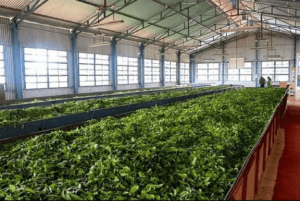
The tea leaf harvesting process begins in early May, when the young leaves are carefully selected from the tea plant, with the best young leaves being called “ichibancha (一番茶).” Experts select only the youngest and greenest leaves to be namacha (生茶), or “fresh tea.” The leaves then go through the main production steps, as follows:
- Withering: This process is done by shaking off moisture from fresh tea leaves at room temperature for 8-24 hours (depending on the type of tea to be produced). The leaves are then dried to reduce the water content of the tea leaves by 50-60%. The resulting tea leaves are soft and bendable before being processed further.
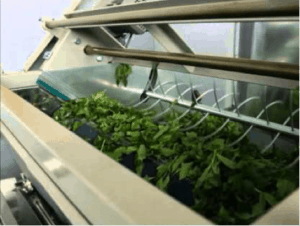
- Rolling: By rolling the leaves to dry them by twisting and crumbling them. During rolling, some broken leaves are normal. If there is no machine, some people may shake or use their hands. During the rolling process, oil will come out of the tea leaves, giving the tea a special aroma. The chemical changes that occur for a short period of time through rolling will result in tea leaves with good taste and aroma. After that, they will be sent to a sifter to separate the types of tea. Small leaves will go to the next step, while bigger and harder leaves will be sent back to be rolled a second time.
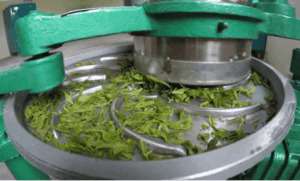
- Oxidation/Fermentation is a chemical process in which oxygen is absorbed to release enzymes that react with air. It begins when the leaf membranes break down during oxidation, causing the leaves to turn a bright gold color. This is the key factor in determining whether a tea is green, black or oolong. It is a transitional stage that affects the aroma and color. If this stage is stopped too soon, the tea will be green and may have a metallic taste. If fermented for too long, it will gradually become sweet and lose both its quality and aroma.
- Drying or burning: This process will dry the leaves evenly throughout the leaves by applying continuous heat of about 120-200 degrees Fahrenheit to stop the oxidation fermentation process. There are two ways to stop the oxidation fermentation process: steaming using heat or by roasting. The tea leaves are placed in a large iron basin for about 20-30 seconds and heated to 100 degrees Celsius. This stops the destruction of the enzymes that cause fermentation. The tea leaves remain green. Roasting causes the tea leaves to turn black and dry, leaving only 2-3% moisture. However, excessive heat can cause the tea to lose its flavor, color, and aroma.
- Grading is a process in which leaves are graded using a screening device or sieve with different sized burrs.
 The above steps do not mean that all types of tea must go through this process, but it is just an overview of the tea leaf processing process. The production of each type of tea will have slight differences, resulting in different flavors. For example, the production of white tea has the shortest steps because it does not have to go through the rolling process and the fermentation process or the oxidation reaction. The young tea leaves will be picked and dried before entering the drying process using steam immediately. Because white tea does not have a fermentation process, the color of the tea leaves is still green and white. In terms of the production of black tea , it is the tea that goes through the most processing steps. The collected tea leaves will go through the full fermentation process, consisting of the 5 basic steps above. During the drying period, the leaves will be 80% dry, which is black tea. But if it is dried too much, it may not have a fragrant smell. The method of making oolong tea is similar to black tea, but the difference is that the leaves are dried directly in the sun for 6 hours. Then, the leaves are shaken in a bamboo basket to make the edges of the leaves flawed, while the center is still green. The fermentation time is about half that of black tea. The oxidation reaction is stopped by making a fire. For oolong tea, the leaves are heated at a higher temperature because they contain a lower water content.
The above steps do not mean that all types of tea must go through this process, but it is just an overview of the tea leaf processing process. The production of each type of tea will have slight differences, resulting in different flavors. For example, the production of white tea has the shortest steps because it does not have to go through the rolling process and the fermentation process or the oxidation reaction. The young tea leaves will be picked and dried before entering the drying process using steam immediately. Because white tea does not have a fermentation process, the color of the tea leaves is still green and white. In terms of the production of black tea , it is the tea that goes through the most processing steps. The collected tea leaves will go through the full fermentation process, consisting of the 5 basic steps above. During the drying period, the leaves will be 80% dry, which is black tea. But if it is dried too much, it may not have a fragrant smell. The method of making oolong tea is similar to black tea, but the difference is that the leaves are dried directly in the sun for 6 hours. Then, the leaves are shaken in a bamboo basket to make the edges of the leaves flawed, while the center is still green. The fermentation time is about half that of black tea. The oxidation reaction is stopped by making a fire. For oolong tea, the leaves are heated at a higher temperature because they contain a lower water content.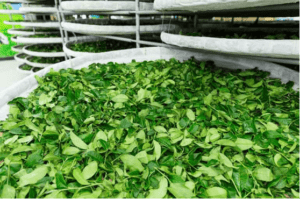
Green tea starts with the first drying of the tea leaves. After that, they are placed on a pan or steamed to prevent the oxide reaction. Finally, the leaves are rolled and dried quickly for the last time. This method keeps the tea leaves green. Due to the simple and less steps in the production process, green tea still has more beneficial plant substances than other types of tea. Green tea can also be divided into 2 types: steamed green tea and roasted green tea.
1.1 Steamed green tea is the process of stopping the chemical processes in the tea leaves by steaming them for a short period of time. When picking the tea leaves, they must be steamed at a temperature of 100 degrees Celsius for 0.7 minutes to stop the activity of the enzyme polyphenol oxidase. Then, they are massaged with hot steam to reduce the moisture content in the leaves. Then, they are massaged in a room at normal temperature to break the cells and massaged with heat again to make the tea leaves roll up beautifully. Then, they are dried to reduce the moisture content in the tea leaves to 4%. Most steamed green tea is processed in Japan. The color of this type of tea is green to yellowish green because it still contains chlorophyll.
1.2 Roasted green tea is tea that stops the chemical processes in the tea buds by roasting them in a hot pan at a high temperature of about 300-350 degrees Celsius, then kneading to break the cells until they roll up and dry. Roasted green tea can be separated into 2 types: lightly fermented roasted green tea and unfermented green tea. The color of the tea is light green with a yellow tint.
From the various steps of tea production process above, it can be easily summarized in this diagram.
I believe that tea lovers, after reading this article, many of you will definitely start to be interested in visiting tea plantations in Japan ^^
Source
http://www.refresherthai.com/article/teaMade.php
http://www.ocha.tv/how_tea_is_made/process/schedule_ryokucha/
Article from : Fuwafuwa
Sakura & Matcha : A Perfect Match for Spring
Around this time of year, many people probably think of the pink cherry blossoms in full bloom, enjoying Japanese sweets and sipping on warm tea. Throughout Japan, there are new sweets with cherry blossom ingredients in almost every shop.
In particular, pairing it with a green tea menu helps to bring out the flavor and mellowness of Sakura perfectly, such as Sakura green tea soft cream, Sakura green tea latte, or donuts that use Sakura as an ingredient in the glaze that coats the donuts. It is an adjustment from the original recipe that is not difficult and can be made for every festival. However, the fun of immersing yourself in such an atmosphere this year will be difficult due to the COVID-19 outbreak. Matchazuki is pleasing those who miss Japan with a dessert recipe that is easy to make and has a Sakura scent.
Start with “Green Tea Mochi Pancakes with Sakura White Bean and Red Bean Filling”
Just pour 150 cc. of water into 30 grams of mochi flour or glutinous rice flour and mix until well blended. Then sift 30 grams of cake flour and add 2 grams of matcha powder and 2 tablespoons of sugar. Mix until well blended. Refrigerate for about 30 minutes.
After that, spread a thin layer of oil on a warm pan. Scoop the prepared dough and spread it into an oval shape. Fry over low heat until both sides are cooked. Fill with mashed white beans mixed with 2 grams of sakura powder or adjust the taste level as you like. If you make a filling with a mild sakura flavor, it is recommended to wrap it with pickled sakura leaves and decorate it with another layer of pickled sakura flowers.
The next recommended menu is “Hanami Dango”, 3 colors of Dango: green, white, and pink. This Dango is popularly eaten during the cherry blossom season while viewing the flowers. Many people believe that the 3 colors of Dango represent the blooming of the cherry blossoms, with green representing cherry leaves, white representing cherry blossoms that are in bud, and pink representing cherry blossoms that are in full bloom.
Let’s go into the kitchen and start cooking…
Start by dividing the kneading bowl into 3 bowls.
- Bowl 1: Take 40 grams of mochi flour, 40 grams of tofu, 1 tablespoon of sugar, and 2 grams of sakura powder and knead until soft.
- Next, in the second bowl: Take 40 grams of mochi flour, 40 grams of tofu, 1 tablespoon of sugar, and 2 grams of matcha powder and knead until soft. Some shops use mochi flour mixed with yomogi (yomogi is a type of Japanese grass that smells and tastes like vegetables. It is popularly used to make wagashi).
- The last part, 3rd bowl: Take 40 grams of mochi flour, 40 grams of tofu, 1 tablespoon of sugar and knead until soft. Then boil water and put the dango flour in and boil until the dango floats to the surface (about 2-3 minutes). Use a whisk to scoop them out of the boiling water and rinse with water to cool the dango. Then set aside. Use a skewer to insert the dango. 3 pieces per skewer and it’s ready to eat.
In Japan, Hanami Dango is popularly used as a topping for green tea parfait or green tea soft cream, making a perfect combination.
Next up is “Green tea Sakura red bean crepe cake” made with green tea chiffon cake, alternating layers with fresh cream, red beans and sakura crepe. The method for making sakura crepe is no different from making regular crepe cake. Beat 4 eggs together and add ⅓ cup of sugar and stir until dissolved. Sift 2½ cups of wheat flour with 2 tablespoons of sakura powder. After that, slowly pour 400 ml. of milk into the flour, dividing it into 3-4 rounds and stirring until there are no flour lumps left.
Add ¼ cup melted butter, mix well. Strain all ingredients and refrigerate the batter for at least 4 hours. When the time is up, stir the batter before frying. Grease a Teflon pan with butter and use low heat. Pour the batter into a circle. You will see that the batter is cooked when there are large air bubbles pushing the batter. Fry until all the batter is gone. After resting the batter by refrigerating it for about 2-4 hours, you can assemble the layers into a green tea sakura crepe cake. As for the method of making green tea cake, you can use this Matchazuki green tea cake recipe or if any shop has its own recipe, you can mix it (read the green tea cake recipe at shorturl.at/abuR5). Then change the cake mold to the same size as the sakura crepe you are making and it is done.
As you can see, Sakura used in making desserts is either Sakura powder extracted from pickled Sakura or pickled Sakura flowers. It depends on which one you choose. And in addition to the dessert recipes above that allow us to experience the perfect harmony of green tea and Sakura, a delicious pair, there are many other menus that can use Sakura to enhance the deliciousness and give a sense of this Seasonal, such as Green Tea Macarons with Sakura Fresh Cream, Green Tea Roll Cake with Sakura Fresh Cream, or like the popular dessert Daifuku, which perfectly combines Green Tea and Sakura.
Source
http://paogohan.blog42.fc2.com/blog-entry-513.html
https://www.travelsintranslation.com/2015/04/recipe-of-the-month-cherry-blossom-sugars/
https://arigatojapan.co.jp/sakura-and-matcha-a-perfect-match-for-spring/
https://soranews24.com/2021/03/11/sakura-and-matcha-star-in-new-mister-donut-collection/
https://nagoyafoodie.com/soft-serve-ice-cream-in-japan/
https://constellationinspiration.com/2020/04/dango-mochi.html
Article from : Fuwafuwa

